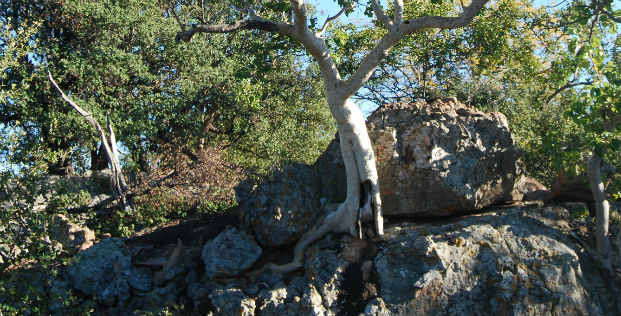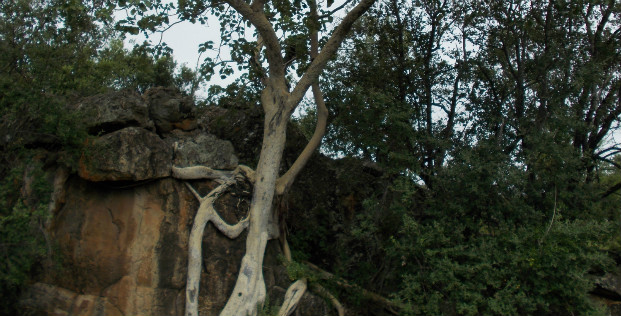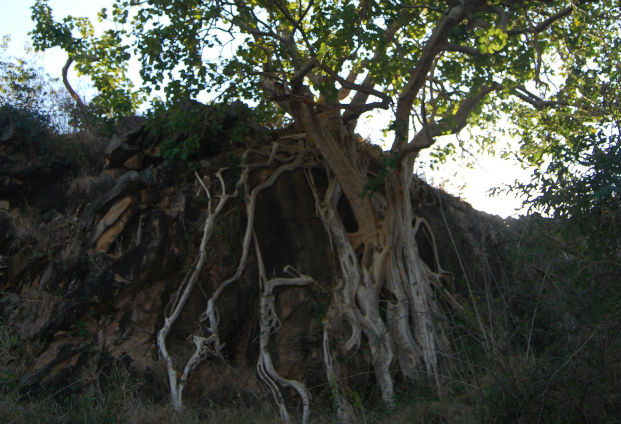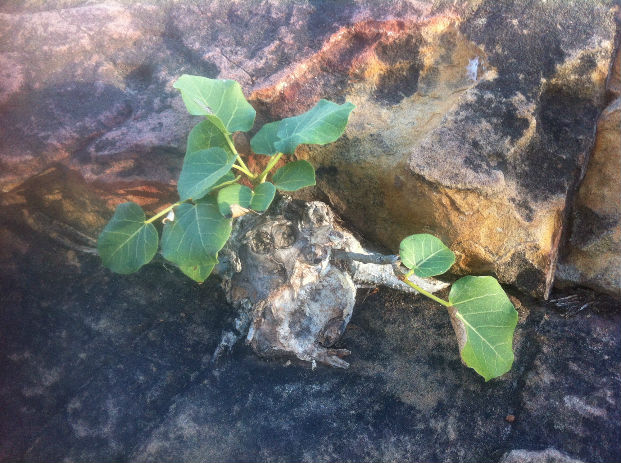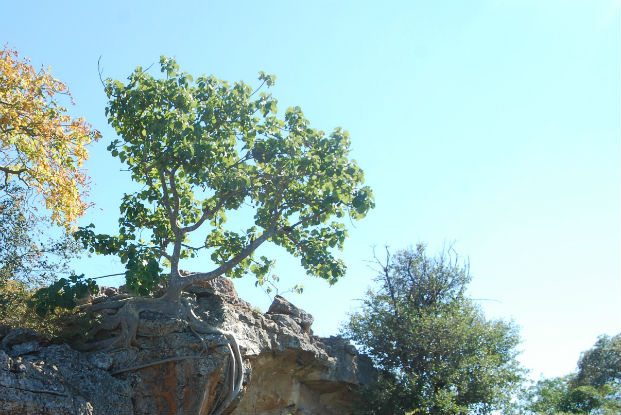Vote for the fact you find most fascinating
The large-leaved rock fig is known as a rock splitter due to its roots expanding in small cracks creating pressure which actually causes the rock to split.
At 15 x 20 cm the large-leaved rock fig has the largest leaves of all fig trees.
Traditionally men will take a decoction of the large-leaved rock fig bark as a strengthening tonic.
Until the roots of a large-leaved rock fig have found a source of nutrition it will experience very little growth other than in its roots. However, once the tree finds such a source its growth is accelerated.
The milky white latex of the large-leaved rock fig is used as a traditional remedy for skin warts.
Two wasp species (Elisabethiella comptoni and Nigeriella fusciceps) are known to be pollinators of the large-leaved rock fig. They enter the fig through a tiny hole at the top, once in they will pollinate the flowers as they lay their eggs.
The roots of the large-leaved rock fig can reach depths of 60m as they snake their way through cracks in the rocks to access nutrients from the water and soil below.



